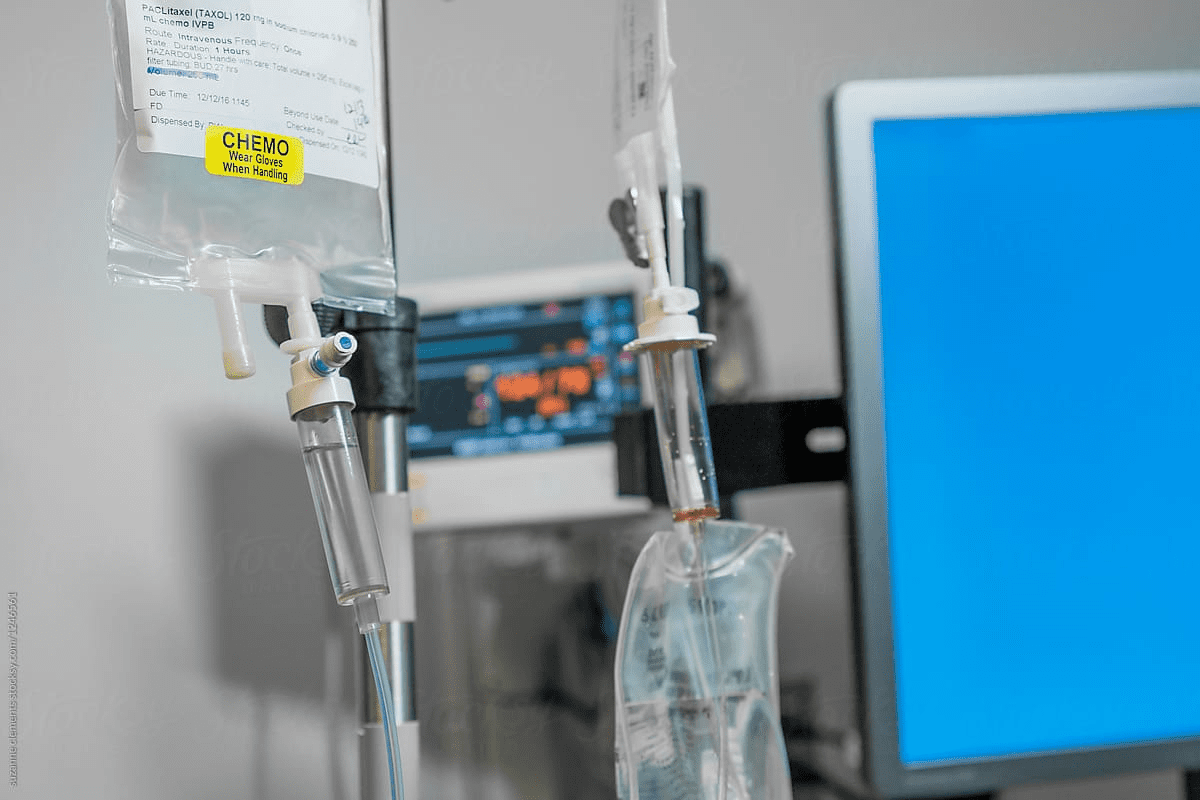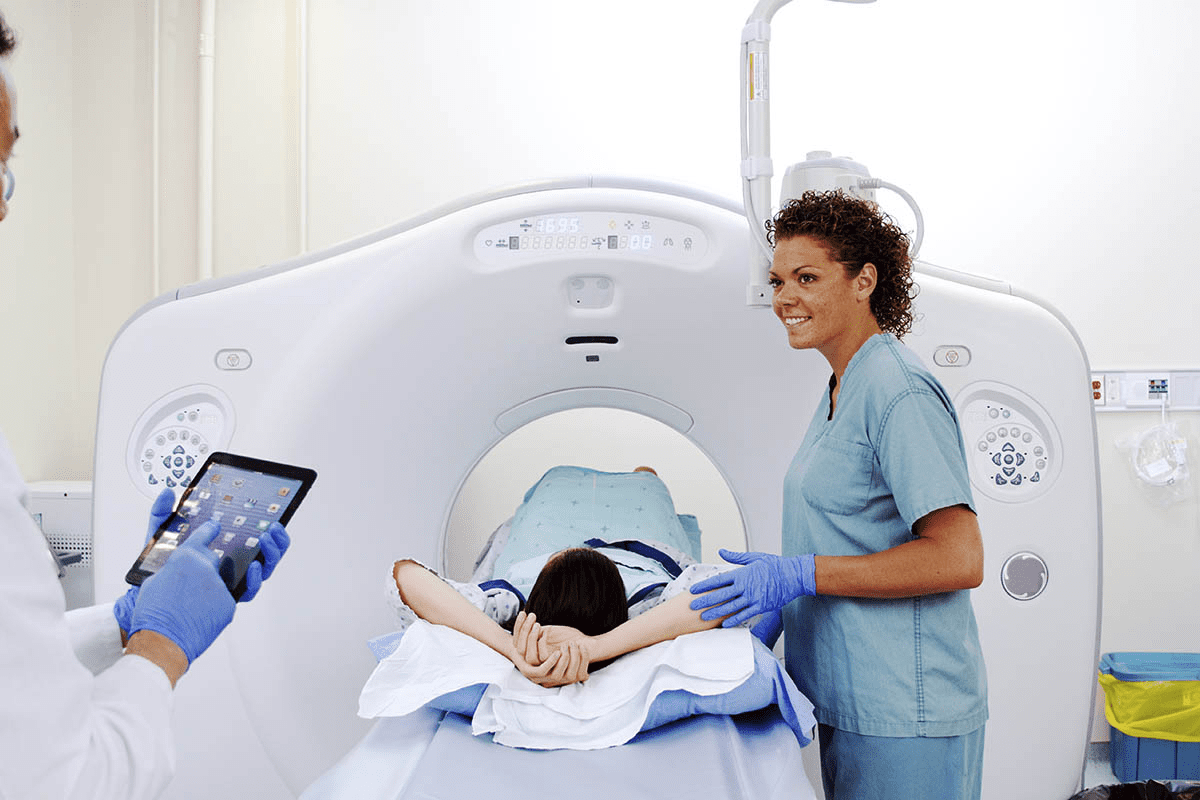Last Updated on November 27, 2025 by Bilal Hasdemir

It’s key for men to know about the certain cancers they can get. Stats show over 1 million new cases and over 323,000 deaths in the US by 2025. This shows how vital it is to be aware and get medical help fast.
At Liv Hospital, we focus on top-notch healthcare that puts patients first. Our team gives the right info and care for each different type of cancer found.
We know how important it is to understand the 16 major male cancer types. Our goal is to offer advanced, honest care and full support to patients from around the world.
Key Takeaways
- Over 1 million new male cancer cases projected in the US in 2025.
- Liv Hospital provides patient-centered care for various cancer diagnoses.
- Understanding different types of cancer is key for men’s health.
- Our team of experts delivers world-class healthcare with complete support.
- Timely medical intervention is essential for effective cancer treatment.
Understanding the Landscape of Male Cancer Types
The world of male cancer is complex, with many types that vary in how common they are, their causes, and treatment results. Knowing about these different cancers is key to preventing, finding, and treating them well.
The Prevalence of Cancer in Men
Cancer is a big health issue for men all over the world. Men are more likely to die from cancer than women. Prostate cancer is the most common cancer in men, making up almost one-third of all cases. Lung, colorectal, and skin cancers are also common.
It’s important to note that cancer rates differ in different places and groups. Things like age, lifestyle, and genes can affect a person’s chance of getting cancer.
Key Statistics on Male Cancer in the United States
In the U.S., cancer is a top cause of death for men. Here are some important facts:
- About 1 in 2 men will get cancer at some point.
- The most common cancers in men are prostate, lung, and colorectal cancers.
- Cancer causes about 1 in 4 deaths among men in the U.S.
Risk Factors Unique to Men
While some cancer risks are the same for both men and women, there are risks that are more common or unique to men. For example:
- Testosterone levels: Higher levels of testosterone are linked to a higher risk of prostate cancer.
- Occupational exposures: Men are more likely to work in jobs that expose them to harmful substances, like asbestos or chemicals.
- Lifestyle factors: Men are more likely to take risks, like smoking, which raises the risk of many cancers.
Knowing these risks is important for creating good prevention and early detection plans.
Prostate Cancer: The Most Common Male Cancer
Prostate cancer is a big worry for men all over the world. Finding it early is key to managing it well. We need to know about its symptoms and treatment choices.
Symptoms and Warning Signs
Prostate cancer often starts without any symptoms in the early stages. But as it grows, men might notice:
- Difficulty urinating or a weak urine flow
- Frequent urination, specially at night
- Blood in the urine or semen
- Pain or burning during urination
- Pain in the back, hips, or pelvis that doesn’t go away
It’s important to remember that these signs can also mean other health issues. But if you notice any, see a doctor right away.
“Early detection of prostate cancer significantly improves treatment outcomes. Men should be aware of the risk factors and discuss screening options with their doctor.”
Screening and Detection Methods
Screening for prostate cancer includes a few tests:
- The Prostate-Specific Antigen (PSA) test, which checks PSA levels in the blood.
- The Digital Rectal Exam (DRE), where a doctor feels the prostate for any issues.
Screening early can greatly improve survival chances. Talk to your doctor about your risk and the pros and cons of screening.
Treatment Options and Survival Rates
Treatment for prostate cancer depends on several things. These include the cancer’s stage, your health, and what you prefer. Options include:
- Active surveillance, watching the cancer without immediate treatment.
- Surgery, like a prostatectomy, to remove the prostate gland.
- Radiation therapy, using rays to kill cancer cells.
- Hormone therapy, to lower male hormones that help cancer grow.
The outlook for prostate cancer varies a lot based on when it’s found. Early detection leads to a high survival rate. The American Cancer Society says the 5-year survival rate for early prostate cancer is almost 100%.
Lung Cancer: Leading Cause of Cancer Deaths in Men
Lung cancer is a big health problem for men all over the world. It’s the main reason for cancer deaths. It’s hard to find early because it often doesn’t show symptoms right away.
Risk Factors and Prevention
Smoking is the biggest risk for lung cancer, causing 80-90% of deaths. Quitting smoking is the best way to lower this risk. Other dangers include secondhand smoke, radon, asbestos, and some chemicals. To stay safe, avoid smoking and limit exposure to harmful stuff.
It’s important to know about the environmental and lifestyle factors that lead to lung cancer. Look for resources that help you avoid these risks.
Early Detection Challenges
Finding lung cancer early is tough because symptoms show up late. Signs include a long cough, chest pain, and trouble breathing. Tests like low-dose CT scans can spot it early in high-risk people. If you’re at risk, talk to your doctor about screening.
Treatment Approaches and Prognosis
Treatment for lung cancer depends on the cancer’s stage and type, and the patient’s health. Options include surgery, chemo, radiation, and targeted therapy. For more on treatment and chances of cure, check Liv Hospital’s lung cancer page. Knowing your options helps you make better choices for your care.
The outlook for lung cancer changes a lot based on when it’s found. Early stages are more treatable, making early detection key. We aim to give full care and support to those facing lung cancer.
Colorectal Cancer: Essential Screening Information
Colorectal cancer is a big health worry for men. Regular screening is key to preventing it. As we get older, the risk of getting colorectal cancer goes up. It’s important for men to know the symptoms, risk factors, and screening guidelines.
Symptoms and Risk Assessment
It’s vital to know the symptoms of colorectal cancer for early detection. Common signs include changes in bowel habits, blood in the stool, and ongoing belly pain. Men with a family history of colorectal cancer, those who are overweight or don’t exercise, and those who eat a lot of red or processed meat are at higher risk.
Key risk factors include:
- A family history of colorectal cancer or polyps
- A personal history of inflammatory bowel disease
- Being overweight or obese
- Physical inactivity
- A diet high in red or processed meat
Screening Guidelines for Men
Men should start screening for colorectal cancer at 45 if they’re at average risk. Screening can find cancer early, when it’s easier to treat. It can also prevent cancer by removing polyps before they turn cancerous.
Screening options include:
- Colonoscopy: A direct look at the colon and rectum
- Fecal occult blood tests (FOBT): Finding hidden blood in stool
- Stool DNA tests: Finding genetic material from cancer cells in stool
Men should talk to their healthcare provider about their risk factors and the best screening schedule for them.
Treatment Modalities and Outcomes
The treatment for colorectal cancer depends on the stage and the patient’s health. Treatments include surgery, chemotherapy, radiation, or a mix of these.
Treatment outcomes are better with early detection:
- Survival rates are higher for cancers found early
- Less invasive treatments might be possible for early-stage cancers
- Regular follow-up care is key for watching for recurrence
By knowing the importance of screening and being aware of risk factors and symptoms, men can take steps to prevent and catch colorectal cancer early.
Urological Cancers: Bladder and Kidney
Urological cancers, like bladder and kidney cancer, are big health worries for men around the world. These cancers hit different parts of the urinary system. They have their own risk factors and signs.
We’ll look at two main types of urological cancers: bladder and kidney cancer. Knowing about these cancers is key for catching them early and treating them well.
Bladder Cancer: Symptoms and Risk Factors
Bladder cancer starts in the bladder’s lining and is more common in men. Key signs include:
- Blood in the urine (hematuria)
- Frequent urination
- Painful urination
Risk factors for bladder cancer are:
- Smoking
- Being around certain chemicals
- Having chronic bladder infections
Early detection is key for good treatment. We suggest knowing the signs and seeing a doctor if they don’t go away.
Kidney Cancer: Key Information
Kidney cancer, also known as renal cancer, starts in the kidneys. Common signs are:
- Blood in the urine
- A lump or mass in the abdomen
- Persistent pain in the side or back
Risk factors for kidney cancer are:
- Smoking
- Being overweight
- High blood pressure
- Family history of kidney cancer
Knowing these risk factors helps in taking steps to prevent and catch it early. We stress the need for regular check-ups and screenings for those at risk.
Skin Cancer in Men: Melanoma and Beyond
Men face a higher risk of skin cancer, like melanoma, than women. It’s key to know the risks and act early to prevent and detect it.
Melanoma: The Deadliest Skin Cancer
Melanoma is the most dangerous skin cancer. It spreads fast if not caught early. We must watch for signs like changes in mole size, shape, or color, or new moles.
Key characteristics of melanoma include:
- Asymmetry
- Border irregularity
- Color variation
- Diameter larger than 6mm
- Evolving over time
Risk Factors Specific to Men
While anyone can get skin cancer, men face higher risks. These include:
- History of sunburn
- Prolonged exposure to UV radiation
- Fair skin
- Family history of skin cancer
Men, and those over 50, are more likely to get melanoma. We must watch for these risk factors.
Prevention and Early Detection Strategies
Preventing skin cancer involves lifestyle changes and awareness. We suggest:
- Using broad-spectrum sunscreen with at least SPF 30
- Wearing protective clothing and hats when outdoors
- Seeking shade, specially during peak sun hours
- Avoiding tanning beds
- Regular self-examinations for new or changing moles
Early detection is key. We urge men to take care of their skin and see a dermatologist for any suspicious changes.
Digestive System Cancers: Liver, Pancreas, Esophagus, and Stomach
It’s important to know about digestive system cancers like liver, pancreas, esophageal, and stomach cancers. They affect different parts of our digestive system. Each has its own risk factors and symptoms.
Liver Cancer: Rising Concern for Men
Liver cancer, or hepatocellular carcinoma, is a big worry for men. It’s linked to chronic hepatitis B and C, heavy drinking, and aflatoxin. Symptoms often show up late, so regular checks are key for those at risk.
Risk Factors for Liver Cancer:
- Chronic hepatitis B and C infection
- Heavy alcohol consumption
- Aflatoxin exposure
- Non-alcoholic fatty liver disease
Pancreatic Cancer: Silent and Aggressive
Pancreatic cancer is aggressive and often found late. It’s linked to smoking, being overweight, and family history. Symptoms like stomach pain and weight loss are hard to spot early.
| Risk Factor | Description |
|---|---|
| Smoking | Increases risk due to harmful chemicals |
| Obesity | Associated with increased inflammation |
| Family History | Genetic predisposition to pancreatic cancer |
Esophageal Cancer: Risk Factors and Symptoms
Esophageal cancer happens in the esophagus, the food tube. It’s linked to GERD, being overweight, and smoking. Symptoms include trouble swallowing and chest pain.
Stomach Cancer: Detection and Treatment
Stomach cancer, or gastric cancer, is often found late. Risk factors include Helicobacter pylori infection, eating too much salt and smoked foods, and smoking. Finding it early is vital. Treatments include surgery, chemotherapy, and radiation.
Treatment Options for Stomach Cancer:
- Surgery
- Chemotherapy
- Radiation Therapy
- Targeted Therapy
Knowing about these cancers helps us fight them better. Early detection and the right treatment can greatly improve survival and quality of life.
Blood and Lymphatic Cancers Affecting Men
It’s important for men to know about blood and lymphatic cancers. These cancers can be serious. We’ll look at the different types, treatments, and risk factors.
Non-Hodgkin Lymphoma: Types and Treatments
Non-Hodgkin lymphoma (NHL) starts in the lymphatic system. It’s when lymphocytes, a type of white blood cell, grow abnormally. NHL has many subtypes, like diffuse large B-cell lymphoma and follicular lymphoma.
Treatment for NHL depends on the type and stage. It might include chemotherapy, radiation, or immunotherapy.
Chemotherapy is a main treatment for NHL. It can be used alone or with other treatments. Immunotherapy uses the immune system to fight cancer and is showing good results for some NHL types.
Leukemia: Various Forms and Approaches
Leukemia is a blood and bone marrow cancer. It’s when blood cells are made abnormally. There are many types, like ALL, AML, CLL, and CML. Treatment varies based on the type and stage.
- ALL and AML are aggressive and need quick treatment, often with strong chemotherapy.
- CLL and CML are slower and might be treated with targeted therapies or careful watching.
Risk Factors and Warning Signs
There are risk factors for blood and lymphatic cancers. These include genetics, certain chemicals, and infections like HIV or Epstein-Barr virus. Knowing the signs is key for early detection and treatment.
“Early detection and treatment of blood cancers can significantly improve patient outcomes. Awareness of risk factors and symptoms is key to identifying these conditions at an early stage.”
Common symptoms include fatigue, weight loss, fever, and swollen lymph nodes. If men notice these, they should see a doctor for a check-up and diagnosis.
Head and Neck Cancers: Oral Cavity and Beyond
It’s important to know about head and neck cancers, like oral cavity cancer. We’ll look at risk factors, symptoms, and treatment options.
Oral Cavity Cancer: Risk Factors and Prevention
Several factors can increase the risk of oral cavity cancer. Smoking and tobacco use are big risks. Knowing cancer warning signs is key to early detection. Drinking a lot of alcohol, with or without smoking, also raises the risk. HPV infection is another risk factor, mainly for certain types of oral cavity cancer.
To prevent oral cavity cancer, avoid tobacco and limit alcohol. Regular dental visits can help catch cancer early. It’s important to know the risks and take steps to lower them.
Symptoms and Early Detection
Spotting oral cavity cancer early is vital. Look out for persistent mouth sores, pain or trouble swallowing, and voice or speech changes. If you notice these symptoms, see a doctor right away.
Screening for oral cavity cancer involves a detailed mouth, throat, and neck exam. Dentists and doctors are key in finding cancer early during routine visits.
Treatment Options and Recovery
Treatment for oral cavity cancer depends on the cancer’s stage, location, and the patient’s health. Treatments include surgery, radiation, and chemotherapy. Often, a mix of these is used for the best results.
Recovering from oral cavity cancer treatment is tough. It involves rehab to get speech and swallowing back. We offer full care to help patients live better lives.
By knowing the risks, spotting symptoms early, and looking into treatments, we can help patients with head and neck cancers, like oral cavity cancer, get better.
Brain Cancer in Men: Understanding the Complexities
Brain cancer in men is complex, with various tumor types and treatment hurdles. It’s a serious issue affecting thousands of men globally. Knowing its details is key for accurate diagnosis and treatment.
Types of Brain Tumors
Brain tumors can be benign or malignant. The most common types in men are:
- Glioblastoma: A highly aggressive and malignant tumor.
- Meningioma: Typically benign, arising from the meninges.
- Acoustic Neuroma: A benign tumor affecting the nerve connecting the inner ear to the brain.
These tumors differ in growth rates and ability to spread. Knowing the tumor type is vital for choosing the right treatment.
Symptoms and Diagnosis
Symptoms of brain cancer vary based on the tumor’s location and size. Common signs include:
- Headaches that worsen over time.
- Seizures, even for those without a history of seizures.
- Cognitive changes, such as memory loss or confusion.
- Motor function changes, including weakness or paralysis.
Diagnosis often starts with imaging tests like MRI or CT scans. A biopsy then confirms the tumor type.
Treatment Approaches and Challenges
Treatment for brain cancer depends on the tumor’s type, size, and location, as well as the patient’s health. Common treatments are:
- Surgery: To remove as much of the tumor as possible.
- Radiation Therapy: To target remaining tumor cells.
- Chemotherapy: To kill cancer cells.
Challenges include the blood-brain barrier, which hinders drug delivery, and the brain’s delicate nature, making surgery risky.
Dealing with brain cancer is a tough journey. Our team is dedicated to providing full care and support to men with this condition. We aim to ensure they get the best treatment outcomes.
Less Common but Critical Male Cancer Types: Testicular and Thyroid
Many men know about common cancers like prostate and lung cancer. But testicular and thyroid cancer are just as important. They are less common, but knowing about them can help catch them early.
Testicular Cancer: The Young Man’s Disease
Testicular cancer is a big worry for young men, hitting those 15 to 35 years old. It’s when cells in the testicles grow abnormally. Catching it early is key, as it’s very treatable then.
Risk Factors and Symptoms: The exact cause of testicular cancer is not known. But some things increase the risk. These include family history, undescended testicles, and past testicular cancer. Look out for lumps, pain, or a heavy feeling in the scrotum.
Thyroid Cancer in Men
Thyroid cancer affects the thyroid gland in the neck, which controls metabolism. It’s more common in women, but in men, it’s often more aggressive. Knowing the risks and symptoms is key for early detection.
Characteristics and Treatment: Men with thyroid cancer often notice a lump in the thyroid gland. Risks include radiation, family history, and genetic conditions. Treatment usually involves surgery, and sometimes radioactive iodine therapy or other treatments.
| Cancer Type | Common Age Group | Key Risk Factors | Common Symptoms |
|---|---|---|---|
| Testicular Cancer | 15-35 years | Family history, undescended testicles | Lump or swelling in testicle, pain or discomfort |
| Thyroid Cancer | Variable, often older adults | Radiation exposure, family history, genetic conditions | Lump or nodule in thyroid gland, neck pain |
Testicular and thyroid cancer are important for men, even if they’re not as common. Knowing the risks and symptoms can help catch them early. Regular check-ups and self-exams are key for men’s health.
Conclusion: Taking Action for Male Cancer Prevention and Early Detection
We’ve talked about the different cancers that affect men. Early detection and prevention are key to better survival rates. We’ve looked at the types of male cancers, their risks, symptoms, and treatments.
Men need to know about the different cancers and their risks. By understanding these, they can take steps to stay healthy. This knowledge helps in preventing and detecting cancer early.
Being aware of cancer is important for prevention. Regular check-ups, a healthy lifestyle, and knowing your family’s health history can help. We urge men to talk to doctors about what’s best for them.
Together, we can make a difference in cancer awareness and early detection. This can lead to better treatment outcomes and save lives. Let’s act now to protect men’s health everywhere.
FAQ
What are the most common types of cancer in men?
Men often get prostate, lung, colorectal, and skin cancers. We’ll look at these and more.
What are the risk factors for male cancers?
Genetics, lifestyle choices, and age are risk factors. Knowing these can help prevent and detect cancer early.
How can prostate cancer be detected early?
Early detection of prostate cancer uses the PSA test and DRE. This improves treatment chances.
What are the symptoms of lung cancer?
Lung cancer symptoms include coughing, chest pain, and breathing trouble. Screening is key for early detection.
How can colorectal cancer be prevented?
Screening tests like colonoscopy can find colorectal cancer early. A healthy diet and exercise also help.
What are the risk factors for skin cancer in men?
UV radiation, fair skin, sunburns, and family history increase skin cancer risk. Use sunscreen and avoid peak sun hours.
What are the different types of urological cancers?
Urological cancers include bladder, kidney, and prostate cancer. Each has its own risk factors, symptoms, and treatments.
How are blood and lymphatic cancers diagnosed?
Blood tests, bone marrow biopsies, and imaging studies diagnose blood and lymphatic cancers. Accurate diagnosis is key for treatment.
What are the treatment options for head and neck cancers?
Head and neck cancers are treated with surgery, radiation, and chemotherapy. The treatment plan depends on the cancer’s type and stage.
Can brain cancer be treated effectively?
Brain cancer treatment varies by tumor type, grade, and location. It includes surgery, radiation, and chemotherapy. The outcome depends on these factors.
What are the less common male cancer types?
Less common cancers in men include testicular, thyroid, and some sarcomas. Awareness and timely medical care are important.
How many kinds of cancer are there?
Over 100 types of cancer exist, each with its own challenges. Knowing the cancer type is vital for effective treatment.
What cancers start with the letter L?
Lungs, leukemia, and lymphoma cancers start with L. They have different risk factors, symptoms, and treatments.
What are the main types of cancer that affect men?
Main cancers in men are prostate, lung, colorectal, skin, and urological. Early detection and screening are key.
References
National Cancer Institute (NCI). Common Cancer Types. https://www.cancer.gov/types/common-cancers
SEER / National Cancer Institute (NCI). Cancer Stat Facts: Common Cancer Sites. https://seer.cancer.gov/statfacts/html/common.html
American Cancer Society. 2025 Cancer Facts & Figures. https://www.cancer.org/research/cancer-facts-statistics/all-cancer-facts-figures/2025-cancer-facts-figures.html
CA: A Cancer Journal for Clinicians. Cancer statistics, 2025. https://acsjournals.onlinelibrary.wiley.com/doi/10.3322/caac.21871








